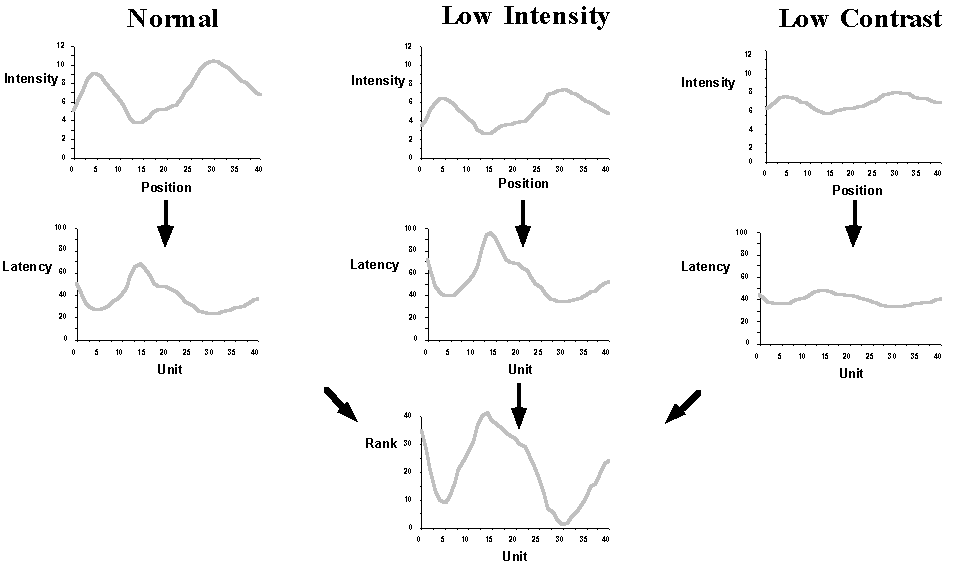In tasks like object recognition, the performance of artificial networks are still poor when compared to humans. Using a go no-go categorization task in which human subjects had to release a button when they detected an animal in a briefly flashed (20 ms) natural photograph, Thorpe et al. (Nature 381, pages 520-522, 1996) showed that the processing required in such a task could be performed in less than 150 ms. In order to reach high order cortical areas, the retinal information must go through at least 10 processing stages, and knowing the constraint of real neurons, (maximum firing rate usually under 100 spikes per seconds), they proposed that this processing was essentially based on a unidirectional flow of information in which, in any given layer, each neuron would rarely generate more than one spike. With one spike per neuron, codes based on neuron discharge rate are questioned.
As an alternative to rate based neural codes, temporal coding is based on the relative order in which the spikes are produced is consistent with lateral inhibition in the first areas of the visual cortex. SpikeNET can use the latency or the relative latency of neuronal discharges - means their order of arrival and still attain high performaces for image processing with only one spike per neuron (see for instance our Face Recognition model).
|
Asynchrony coding by the inputs layers in SpikeNET. The number of neurons and the number of input synapses per neurons. Most strongly activated neurons (by the curve intensity) tend to fire first. |
Furthermore, order coding is contrast independent (see folowing graph) and can be analysed from a methematical point of view. You may find more information in the paper section.

|
Invariance of Rank Order Coding to stimuli contrast changes. The three graphs on the left illustrate how an input intensity profile can be converted first into a latency profile across 40 units, and then into a rank profile. The center and right-hand panels show that changes in either intensity (center) or contrast (right) will have no effect on the rank ordering of the units, although latencies will change. |